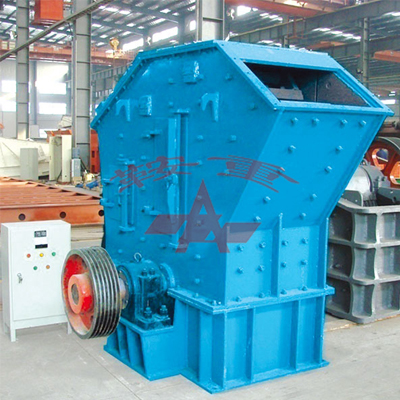
 8 Major Advantages of Anzhong
8 Major Advantages of Anzhong+86 152 4210 2697
Primary crushers are the driving force behind the success of your plant. Here is a successful process for selecting a primary crusher. One should start with the purpose of the crusher, move to model refinement and finish with a successful installation.
The primary crusher is a workhorse that converts the blast feed size to a smaller size to manage for the other site components (belts, screens, and eventually any secondary crushers) on the path to the finished product. All components of the crushing site depend on the proper operation of the primary crusher, which is why it is vital to select the right crusher for the job.
The first step in selecting a primary crusher is to proceed at a high level. It is necessary to define the intended use of the crusher. This purpose is a given prior to the entire decision-making process. Sometimes a degree of guidance or experience is required.
The two main factors to consider when determining the purpose are the feed size and the type of material to be crushed. There are many other factors that need to be reviewed - the long-term strategy for the site, the discharge rating, the moisture content of the material, and the target yield, to name just a few.

Impact Crusher
Gyratory crushers are usually only used when the target output exceeds one million tonnes per year. These machines are built to order and usually take more than a year to complete the requirements, in addition to a month of site installation time. This makes them most suitable for plants with long-term plans. They are ideally suited to abrasive materials such as granite.
Jaw crushers are the main crushers and are the most commonly used. They are also suitable for abrasive materials, but are much more portable than gyratory crushers and can be repositioned annually as required.
Impact crushers are best suited to less abrasive materials, such as limestone. Over time, these crushers will incur higher wear costs but will usually provide greater reduction and possibly better shape.
Having determined the overall purpose of the crusher, the next step is to understand the expected performance of the crusher model variation. This is where simulation becomes critical. The purpose of running simulations is to determine how well a new coarse crusher will perform and to estimate how performance will affect downstream loads.
After the simulation, the next step in ensuring the crusher fits is to visually transfer the selection to other components of the plant via a concept map. This would include a visual representation of the existing crushing site, including topographical maps and slope elevations, as well as a description of the affected components showing the flow of the system. New primary crushers also typically require conveyor and screen updates when replacing existing equipment to increase capacity.
Once the correct type and model of the crusher have been selected, the final step in the process is to install the crusher into the plant.
This varies considerably depending on the context and can often become complex and difficult. To minimize the complexity, ensure that the crusher manufacturer or distributor has service technicians with the expertise to support you at every step of the installation. This includes project management, system configuration, performance verification, and equipment training.
Working with a partner to ensure the correct installation of your primary crusher will save you time, provide greater reliability and enable on-site configuration for maximum output from the outset.
If you want to know about the wholesale best crushers price, welcome to contact us.
Anshan Anzhong Mining Machinery Co., Ltd.
swan0119
No.294 Anqian road, Gaoxin district, Anshan, Liaoning,China
Copyright © Anshan Heavy Duty Mining Machinery Co., Ltd. All Rights Reserved | Sitemap
